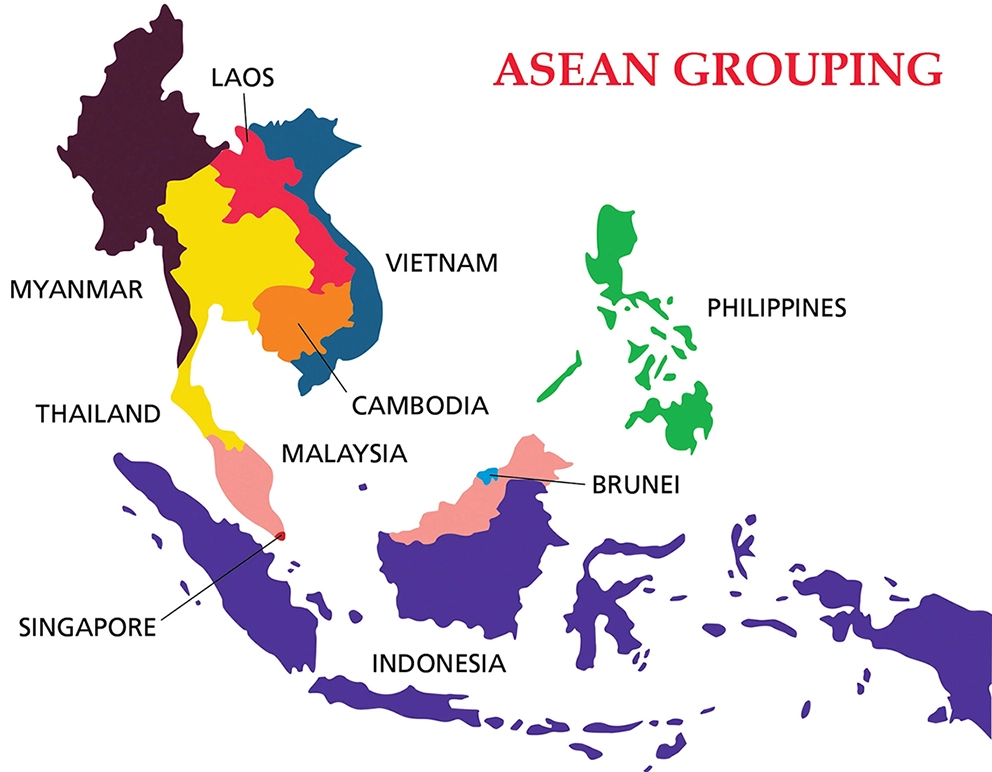- Filter By :
- Polity & Governance
- International Relations
- Social Justice
-
Q. There are several geopolitical challenges that obstruct India-ASEAN relations. Discuss (150 words)
06 Dec, 2022 GS Paper 2 International RelationsApproach
- Start your answer by briefly introducing ASEAN.
- Discuss various geopolitical challenges faced by India-ASEAN relations.
- Suggest some measures to enhance India-ASEAN relations.
- Conclude accordingly.
Introduction
- ASEAN, a 10-nation grouping, is considered one of the most influential groupings in Southeast Asia. It includes Indonesia, Thailand, Vietnam, Laos, Brunei, the Philippines, Singapore, Cambodia, Malaysia and Myanmar.
- ASEAN states are located at a strategically important junction of the Indo-Pacific which makes ASEAN a focal point for both regional and global powers.
Body
- Geopolitical challenges faced by INDIA-ASEAN cooperation:
- Territorial Disputes: ASEAN member states are enmeshed in territorial disputes with interested powers for a long time. For example, China’s claim to territories in the South China Sea overlaps with competing claims by Brunei Darussalam, Malaysia, the Philippines and Vietnam.
- Indo-Pacific Rivalry: For a long time, the assumption of China as the primary economic partner and the US as the primary security guarantor has been at the heart of the ASEAN balance.
- Today, that balance is falling apart and the Russia-Ukraine war has further aggravated this tension. This sharpening of major power rivalry in the Indo-Pacific region is threatening the underlying stability on which rested the regional growth and prosperity.
- Unstable Geoeconomics: The geopolitical tension in the Indo-Pacific is producing geoeconomic consequences where issues of trade and technology cooperation as well as supply chain resilience is at peak.
- And this is happening at a time when ASEAN remains a divided organisation internally on how to manage these challenges.
- Measures to enhance cooperation between INDIA and ASEAN countries:
- Act East Policy: Act East Policy focused on ASEAN countries + Economic Integration + East Asian countries + Security cooperation.
- It involves intensive and continuous engagement with Southeast Asian countries in the field of connectivity, trade, culture, defence and people-to-people-contact at bilateral, regional and multilateral levels.
- Prime minister of India highlighted 4C's of Act East Policy.
- Culture
- Commerce
- Connectivity
- Capacity building
- Prime minister of India highlighted 4C's of Act East Policy.
- Initiatives to Enhance Connectivity:
- Agartala-Akhaura Rail Link between India and Bangladesh.
- Intermodal transport linkages and inland waterways through Bangladesh.
- Kaladan Multimodal Transit Transport Project and the trilateral highway project connecting the northeast with Myanmar and Thailand.
- Other Initiatives:
- Assistance extended in the form of medicines/medical supplies to ASEAN countries during the pandemic.
- Scholarships with offers of 1000 PhD fellowships have been offered at IITs for ASEAN countries participants.
- India is also implementing Quick Impact Projects in Cambodia, Laos, Myanmar and Vietnam to provide development assistance to grass-root level communities in the fields of education, water resources, health etc.
- Quick Impact Projects (QIPs) are small-scale, low-cost projects that are planned and implemented within a short timeframe.
Conclusion
India needs to enhance trade and connectivity with ASEAN region as it will be critical in order to enhance its profile in the region. But there should also be a concerted attempt by India to develop strong bilateral partnerships with like-minded partners within ASEAN. This is the age of Mini laterals and India should not be shy of exploring them even In Southeast Asia as ASEAN will continue to struggle with its internal cohesion for the foreseeable future.
To get PDF version, Please click on "Print PDF" button.
Print PDF





